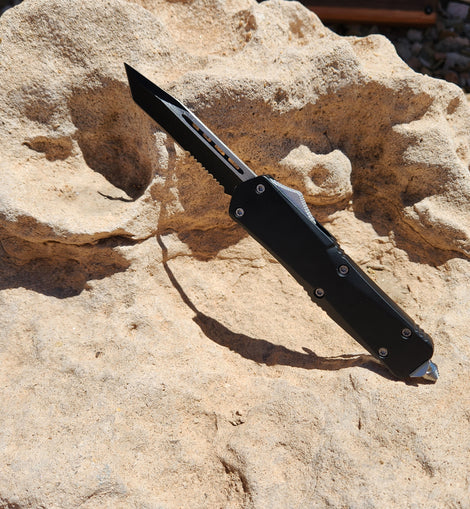The Ultimate Guide to Choosing a Stainless Steel Folding Knife
Stainless steel folding knives are indispensable tools for outdoor enthusiasts, professionals, and everyday users alike. With their versatility, durability, and ease of use, they are essential for various tasks, from cutting ropes to preparing food. This guide will help you choose the perfect stainless steel folding knife for your needs. If you're looking for a reliable source of knives and other tactical equipment, consider visiting the best tactical gear store in Arizona.
Understanding Stainless Steel Grades
Different grades of stainless steel offer varying levels of hardness, corrosion resistance, and edge retention. Common stainless steel grades used in folding knives include:
440C: Known for its high carbon content, offering excellent hardness and edge retention.
AUS-8: A Japanese stainless steel that balances hardness, toughness, and corrosion resistance.
CPM-S30V: A premium stainless steel that provides exceptional edge retention and durability.
VG-10: Another high-end Japanese steel known for its sharpness and corrosion resistance.
Blade Types and Shapes
The shape of the blade influences its performance and suitability for different tasks. Common blade shapes include:
Drop Point: Versatile and ideal for general use, with a robust tip for enhanced strength.
Clip Point: Features a concave curve on the back, making it excellent for precision tasks.
Tanto: Designed for piercing hard materials, with a strong, angular tip.
Sheepsfoot: Offers a straight edge and rounded tip, perfect for slicing and cutting without piercing.
Locking Mechanisms
A reliable locking mechanism is crucial for safety and usability. Popular locking mechanisms include:
Liner Lock: A simple and effective design where the liner locks the blade in place.
Frame Lock: Similar to the liner lock but uses the frame of the knife for added strength.
Back Lock: Features a spine lock that is engaged by pressing a lever on the back of the handle.
Axis Lock: Utilizes a sliding bar that engages with the tang of the blade, known for its ambidextrous use.
Handle Materials
The handle material impacts the knife’s grip, durability, and weight. Common materials include:
G10: A fiberglass laminate that is lightweight, durable, and provides excellent grip.
Micarta: A composite of linen or paper and resin, offering a comfortable and sturdy grip.
Aluminum: Lightweight and strong, often anodized for added durability and color variety.
Titanium: Extremely durable and corrosion-resistant, though typically more expensive.
Additional Features
Consider additional features that can enhance the functionality and convenience of your folding knife:
Pocket Clip: Allows for easy carrying and accessibility.
Thumb Stud or Hole: Enables one-handed opening.
Serrated Edge: Provides extra cutting power for fibrous materials.
Lanyard Hole: Useful for attaching a lanyard for secure handling or storage.
Where to Buy
Finding a reputable store with knowledgeable staff and a wide selection of knives is essential. For those in Arizona, the best tactical gear store in Arizona offers an extensive range of stainless steel folding knives and other tactical equipment. Their experienced team can help you choose the perfect knife to meet your specific needs.
Conclusion
Choosing the right stainless steel folding knife involves understanding the different grades of stainless steel, selecting the appropriate blade shape, ensuring a reliable locking mechanism, and considering handle materials and additional features. By following this guide, you can make an informed decision and find a knife that suits your requirements. Remember to visit the best tactical gear store in Arizona for expert advice and high-quality products.



Comments
Post a Comment